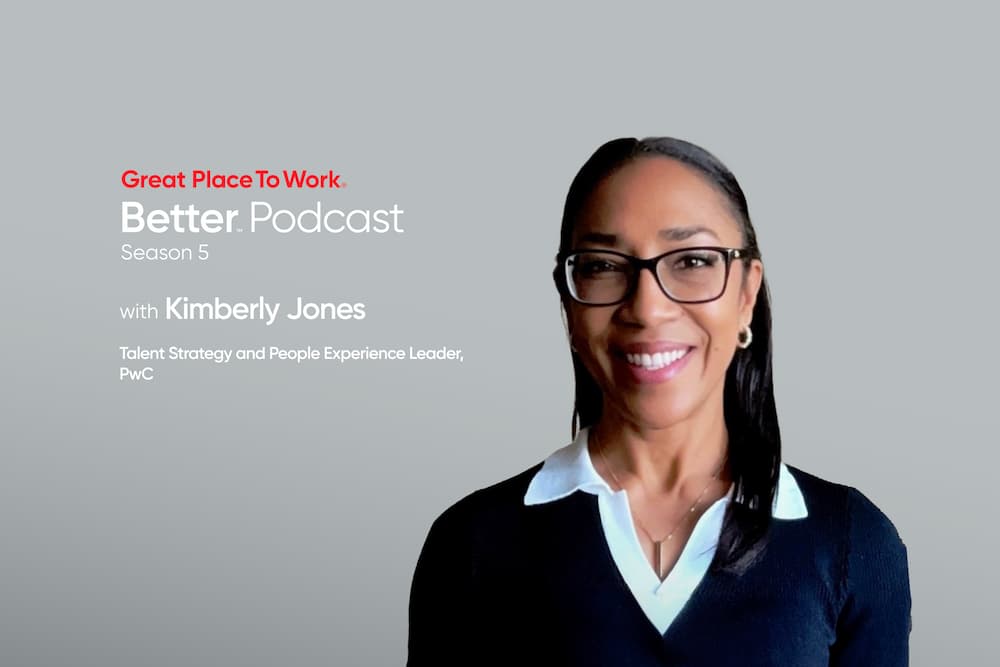Employee Experience, Employee Well-being
How to Build a Culture of Health and Wellness at Work
For too many workers today, unhealthy work environments are prevalent. Employees are far more likely to experience a slew of mental and physical health problems including stress, anxiety, depression, alcoholism, hypertension and many other negative outcomes than come home feeling energized and happy. The result for organizations—other than a workplace brimming with sad, stressed-out and sickly people—includes costlier insurance premiums, reduced innovation, a negative employer brand, increased absenteeism, lower worker productivity, and more.
The good news, though, is that we know exactly how to help your organization pinpoint which of these wellness factors you're doing well on and which can use more work using our research-backed Trust Index™ Survey. Our statements are specifically targeted to assess employees' experience of caring, fairness and equity, physical/psychological/emotional safety, feelings of pride in their work, and how strong the camaraderie and community experience is every day. Great Place To Work-Certified companies and Best Workplaces prove that it is possible to create successful businesses where employees feel strong, healthy, and connected.
7 Tips for Better Employee Health & Wellness
While physical health has been in the spotlight for years, mental health is finally getting the attention that it deserves. The truth is that physical and mental health go hand-in-hand and and both must be present for true wellness to be achieved. But this isn't news to many of you. We invited Dr. Jeffrey Pfeffer of Stanford University, an expert in workplace health to speak at our Great Place To Work For All Summit to share his point of view on workplace wellness.
Jeffrey Pfeffer's research focuses on the effects of work environments on human health and well-being. During his keynote he shared some fascinating findings about wellness. Most importantly, wellness programs are not the lever that drives employees’ health in the workplace. Instead, improving the overall work environment by creating a great place to work for all is a far more effective way to keep employees healthy. In his keynote address, he noted, “Companies that build great workplaces also improve human physical and mental health and lifespan.” He estimates that unhealthy work environments cost society a staggering $130 billion and 125,000 deaths each year.
What can employers do to keep workers healthy? According to Pfeffer’s research, there are seven factors that directly impact the health of employees on the job:
1. Job design, including control over work
There has been a lot of research conducted on employees that have little control over their work. The negative affects of work are particularly acute for employees in high-pressure jobs with little control over their workdays. British epidemiologist Michael Marmot and his team examined employees within the British Civil Service. According to an article published in the McKinsey Quarterly, "Marmot’s team discovered that the higher someone’s rank, the lower the incidence of and mortality from cardiovascular disease. Controlling for other factors, it turned out that differences in job control, which were correlated with job rank, most accounted for this phenomenon. Higher-ranked British employees, like higher-ranked employees in most organizations, enjoyed more control over their jobs and had more discretion over what they did, how they did it, and when—even though they often faced greater job demands."
So what is Pfeffer's recommendation? Organizations can guard against these dangers by creating roles with more fluidity and autonomy, and by erecting barriers to micromanagement.
2. Overtime and number of hours worked
In Morten Hansen's book, Great at Work, based on a study of about 5,000 people, he finds that performance is not positively related to work hours. In fact, according to the book, the greater the work hours, the lower the productivity per hour worked. According to Pfeffer, long work hours "are associated with adverse health, including cardiovascular disease, diabetes, disability." Employers need to acknowledge this fact and encourage workers to leave after their work day is done to enjoy time with family and friends, without the stigma often associated with 'leaving early'.
3. Providing social support
Pfeffer's research shows that social support—family and friends you can count on, as well as close relationships—can have a direct effect on health and buffers the effects of various psycho-social stresses, including workplace stress, that can compromise health. He says, "Unfortunately, workplaces sometimes have characteristics that make it harder to build relationships and provide support. Consider, for example, practices that foster internal competition such as forced curve ranking, which reduces collaboration and teamwork. In fact, anything that pits people against one another weakens social ties among employees and reduces the social support that produces healthier workplaces. Equally destructive are transactional workplace approaches in which people are seen as factors of production and where the emphasis is on trading money for work, without much emotional connection between people and their place of work."
4. Conflict between work and family commitments
Many people have to make hard trade-offs every day about work and family commitments. School talent shows should be enjoyed by all parents, not just those that stay home. You shouldn't have to feel guilty for taking your child or aging parent to the doctor, yet for many people these events are stress-producing because they feel they are always letting down either their family or their manager/team.
Our research on innovation also revealed that this "Everyday Fear" is one of the 5 major barriers that keep employees from contributing their best new ideas.
Pfeffer says, "People need to choose their employer not just for salary and promotion opportunities but on the basis of whether the job will be good for their psychological and physical health." Ensure that your employees know that family and other personal commitments are a part of life and give them the flexibility to not miss out on important moments with family. If employees are happy at home they will bring their best selves to work every day.
5. Perceived fairness and justice at work
The data shows that workplace satisfaction, commitment, trust and reduced levels of turnover can be correlated with an employee’s perceived level of justice in their workplace. As described in the Great Place To Work® Trust Model©, fairness is a key component of trust. At its heart, fairness addresses whether employees believe they are operating on a level playing field, and at Great Place To Work® we assess several key components of fairness:
- Equity (fair pay and profit sharing; equal opportunities; fair treatment across job roles)
- Impartiality (fair promotions; lack of favoritism)
- Justice (fair treatment regardless of personal characteristics; feeling one has the right to challenge unfair decisions).
Employers should develop programs and practices that promote fairness and justice at work. We featured some examples in this post.
6. Layoffs and economic insecurity
There is nothing more stressful for employees than worrying about whether their jobs are safe, especially as they watch their colleagues get laid off. Layoffs are widely considered an unavoidable response to economic downturn. Pfeffer also thinks that that they lead to increased mortality and poor health. But he finds that the voluminous studies of the effects of layoffs on corporate performance “tells a largely, although not completely consistent, story — there is little evidence that layoffs provide benefits and much evidence that layoffs can harm the companies doing them.”
7. Offering health insurance
The founder of Patagonia, who famously wrote a book entitled Let My People Go Surfing, ensures that every Patagonia employee gets health insurance from the first day on the job and every other weekend is a three-day weekend so that people can enjoy the outdoors. Unfortunately, according to Pfeffer, the percentage of companies offering employer-sponsored health has gone down while the costs born by employees has gone up. In an interview with Workforce he says, "There’s often a financial burden for employees, even when they have insurance. A significant fraction of the U.S. workforce is unable to get their prescriptions filled or access medical care. A fair percentage of those people are in fact insured. And in fact, a reasonable number of people who file for bankruptcy because of medical expenses also have health insurance."
He advises companies worried about healthcare costs to focus on the work environment because "that’s a source of a lot of the stressors, which create chronic disease". Second, he suggests treating human sustainability as importantly as environmental sustainability. He explains, "This idea that we can use people and spit them out I think is just not a very humane, not a very good way to do things."
If your organizations is truly concerned with employee health, before working on separate wellness initiatives, first take stock of the broader work environment to ensure it is one that promotes well-being on all levels. We can help you create a culture that cures all.











